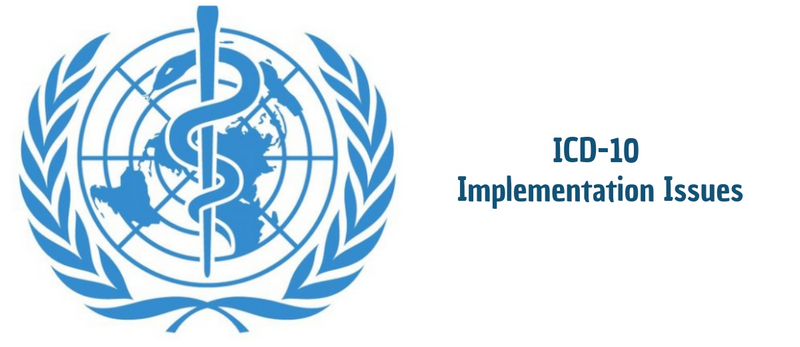ICD-10 Implementation Issues

The ICD has become the international standard diagnostic classification for all general epidemiological goals and many goals related to health management. They include an analysis of the overall health situation of population groups, as well as the calculation of the frequency and prevalence of illnesses and other health problems in their relationship to various factors.
Periodic revisions of the ICD, starting with the Sixth Revision in 1948, were coordinated by the World Health Organization. As the use of the classification expanded, its users had a natural desire to participate in the revision process. The tenth revision is the result of a huge international activity, cooperation and compromise.
IMD-10: Implementation Issues and Challenges
The first attempt to locate the disease systematically was made by Francois Bossier de Lacroix (1706-1767), also known as Sauvages. Sauvages’ work was published under the title “Nosology Methodology” (Nosologia Methodica).
A century earlier, John Graunt tried to determine the proportion of live-born children who died under the age of 6 years, without having information about the age of children at the time of death. He selected all the deaths, defined as death from thrush, convulsions, rickets, dental diseases and worm infestations, loss of rest, death in the first month of life, death of infants, death from liver enlargement, loss of death, smallpox, “pork pox”. Despite the imperfection of the methodology, Graunt received a fairly objective result: according to his calculations, the proportion of children under the age of 6 was 36%.
The First International Statistical Congress, held in Brussels in 1853, asked Dr. Marc d’Espine from Geneva to prepare a single classification of causes of death applicable at the international level. At the 2nd Congress, held in Paris in 1855, he presented two separate lists based on completely different principles. His classification consisted of five groups: epidemic diseases, organic (systemic) diseases, diseases categorized by anatomical location, developmental diseases, and diseases that are a direct consequence of violence. Dr. Marc d’Espine has grouped the diseases according to the nature of their manifestations (gouty, herpetic, hematic, etc.). Congress adopted a compromise list consisting of 139 sections. In 1864, this classification was revised in Paris based on the model proposed by W. Farr. The following revisions took place in 1874, 1880 and 1886.
In 1891, the International Statistical Institute entrusted a committee chaired by Jacques Bertillon (1851–1922), head of the Statistical Service of Paris, with the task of preparing a classification of causes of death.
Bertillon presented the report of this committee to the International Statistical Institute at a session held in 1893 in Chicago.
The classification prepared by Bertillon was based on the classification of causes of death, which was used in Paris and which, after its revision in 1885, was a synthesis of the English, German and Swiss versions. This classification was based on the principle adopted by Farr and included in the division of diseases into systemic and organ-specific or anatomical localization.
This classification of death causes received general recognition and was undertaken for use by several countries and many cities. In North America, this classification was first used by Jesus E. Monjaras to produce statistics in San Luis Potosi, Mexico. In 1898, the American Public Health Association recommended that statisticians from Canada, Mexico and the United States adopt the Bertillon classification. The association also made a proposal to revise the classification every 10 years.
The tenth revision of the International Classification of Diseases and Related Health Problems is the latest in a series of revisions of classifications, which began in 1893 as the Bertillon Classification, or the International List of Causes of Death, and in 1948, with the Sixth Revision, was expanded to fatal.
William Farr discussed the principles that should guide the preparation of a statistical classification of diseases and insisted on the release of a single classification.
The International Conference on the Tenth Revision of the International Classification of Diseases was held by the World Health Organization in Geneva from September 25 to October 2, 1989. The main innovation in the Tenth revision is the use of an alphanumeric coding system, which presupposes the existence of one letter in the four-digit heading followed by three digits, which made it possible to double the size of the coding structure. Introduction of letters or groups of letters allows you to encode up to 100 three-digit categories in each class. The possible code numbers range from A00.0 to Z99.9.
An important innovation was the inclusion of the list of headings for violations arising after medical procedures. These rubrics indicated serious conditions arising after various interventions, such as endocrine and metabolic disorders after removal of the organ or other pathological conditions, such as dumping syndrome after stomach surgery.